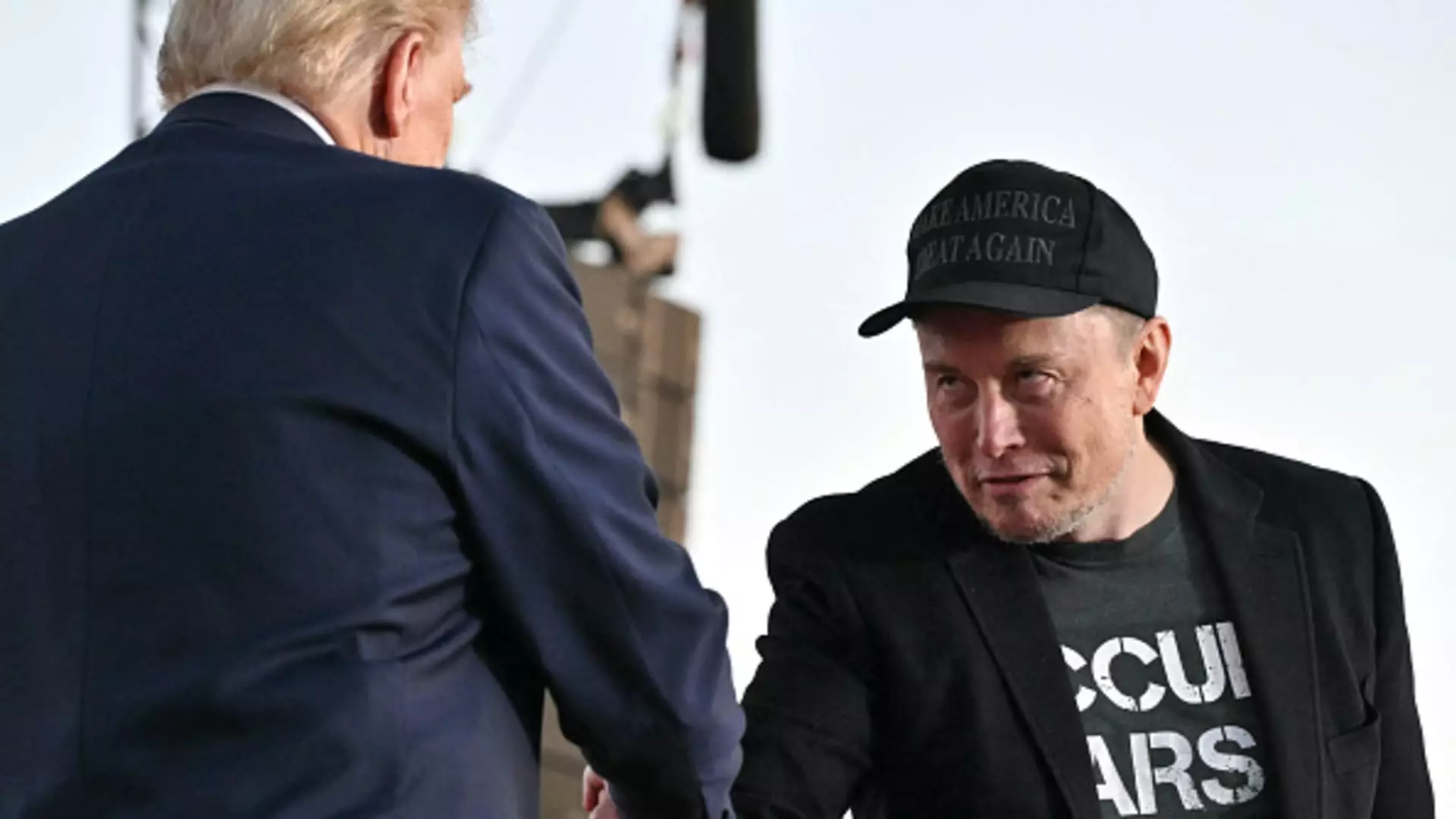On a noteworthy Monday, Tesla’s share price soared nearly 8% in premarket trading following an impactful news report that indicated President-elect Donald Trump’s transition team is prioritizing the establishment of a federal regulatory framework for self-driving vehicles. The surge in Tesla’s stock reflects a market sentiment that is buoyed by the anticipated favorable treatment of autonomous vehicle technology, particularly highlighted by the close relationships between key political figures and the company’s CEO, Elon Musk. Stock market movements around Tesla often serve as a compass for broader investor confidence in the future of automotive technology and innovation.
The specifics of the Bloomberg News report remain somewhat elusive, as details come from unnamed sources. As a result, major news outlets like CNBC have been unable to confirm the information independently and have sought comments from both Trump’s team and the National Highway Traffic Safety Administration (NHTSA). Investor vigilance is likely to remain high as any solidifying of these regulatory frameworks can create an expansive landscape for Tesla and other players in the autonomous driving sector.
Elon Musk, as a significant figure in the tech industry, has been an outspoken supporter of Trump, especially leading up to the recent elections. This alliance appears to be bearing fruit as Musk is positioned advantageously within a newly formed government initiative dubbed the Department of Government Efficiency (DOGE), tasked with minimization of bureaucratic red tape, regulatory relaxation, and curbing unnecessary governmental expenses. The implications for Tesla are profound, as a supportive regulatory environment could open doors previously closed by stringent regulations.
The potential creation of a federal framework for self-driving vehicles not only has immediate strategic ramifications for Tesla but extends to the entire landscape of autonomous driving. If enacted, such regulations would provide clarity and potentially expedited approval processes for Tesla’s innovations, thereby enhancing its market competitiveness.
For years, Tesla has been promising fully-autonomous vehicles, and while the excitement surrounding this vision has kept the company’s stock alive, the execution has yet to match the grandiose assertions. The company’s long-term aim is to deploy a fleet of “robotaxis,” which could operate without human oversight. Recently, Musk introduced the concept of a robotaxi named “Cybercab”—a futuristic vehicle designed without steering wheels or pedals. This significant leap toward the future encapsulates the bold ambitions that characterize Tesla.
However, the race for leadership in the self-driving vehicle domain is not without fierce competition. In fact, Tesla is already facing challenges from established competitors that have successfully rolled out driverless vehicles on public streets. Google’s Waymo, for instance, stands out as a frontrunner in this space, having made important strides in real-world applications for self-driving technology. For Musk, the pressure to deliver the promised technology becomes increasingly pronounced, especially as rivals showcase tangible results.
While a federal regulatory framework could offer support and direction for Tesla, it is crucial to consider the safety implications of self-driving technology. The current version of Tesla’s Full Self-Driving (FSD) system still relies heavily on human supervision, which underscores the complexity of achieving true autonomous driving. The promise of fully unsupervised systems, expected to roll out in select markets like Texas and California next year, raises legitimate safety concerns.
Musk’s statements about expectations for FSD capabilities reflect optimism, but the runaway success of self-driving technologies hinges on the careful balance of innovation and public safety. It is imperative for regulatory bodies to maintain stringent oversight, ensuring that vehicle technology meets high safety standards before widespread deployment occurs.
As Tesla stands at the cusp of potentially groundbreaking regulatory reforms, the strategic landscape for self-driving technology is primed for significant evolution. The interplay between political support, corporate strategy, and consumer acceptance will shape the future of how autonomous vehicles are regulated and implemented on a grand scale. The actions taken in the coming months will not only dictate Tesla’s fortunes but also influence the course of innovation in the automotive industry at large.


Leave a Reply